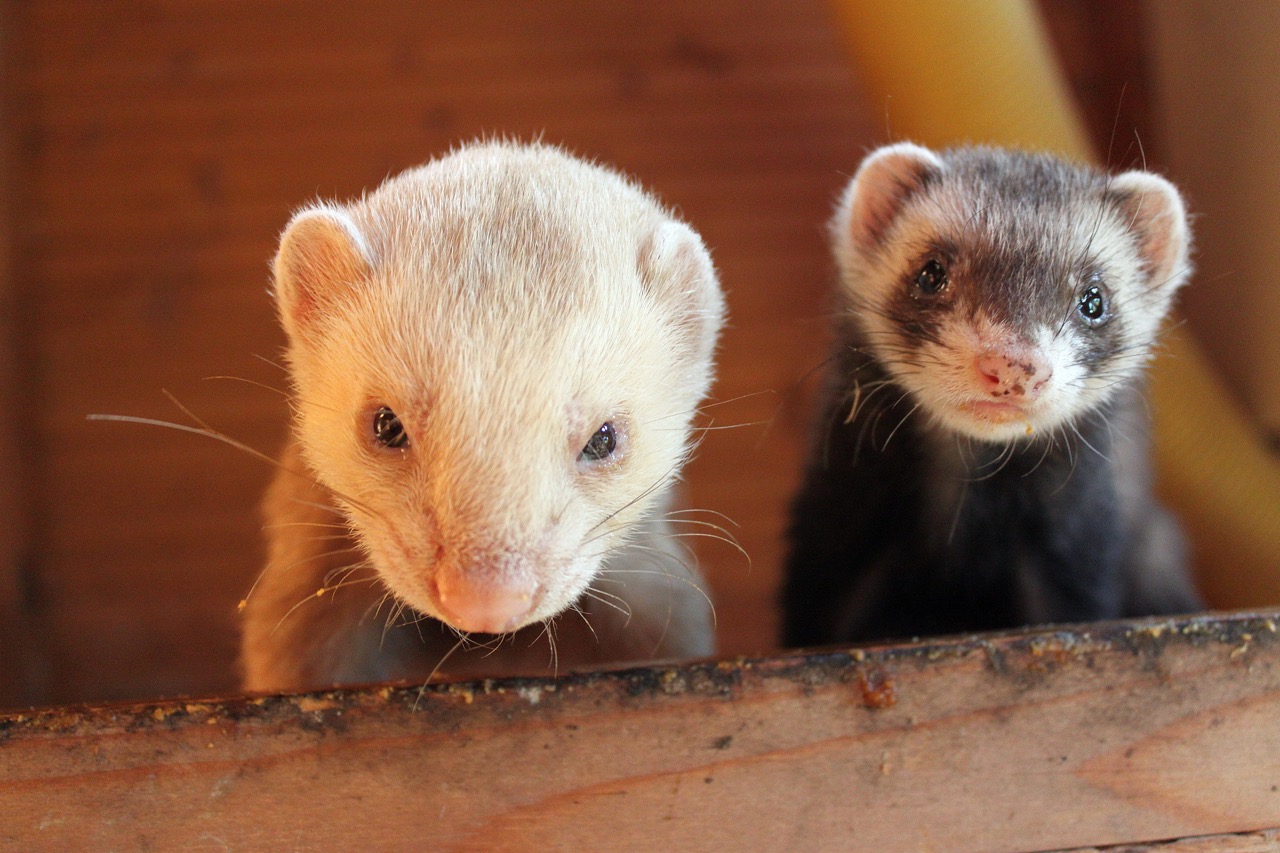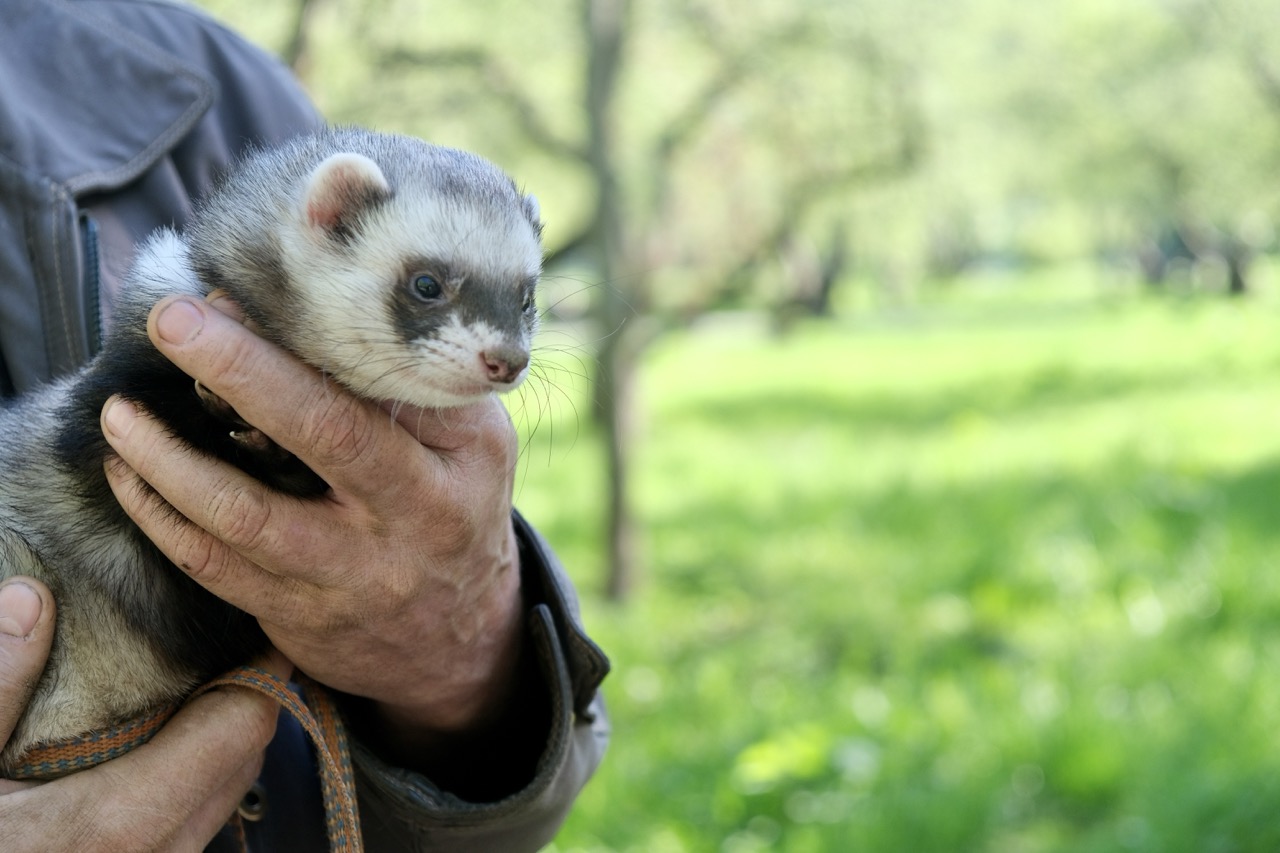Ferrets are increasingly popular as pets due to their playful nature and social behavior. However, like any other pet, they are susceptible to a variety of health issues, particularly respiratory diseases. Understanding the biology of ferrets, their respiratory anatomy, and the common ailments they face is crucial for any ferret owner. This article aims to explore these topics, providing insights into preventive measures and the importance of early detection and veterinary care.
Understanding Ferret Respiratory Anatomy and Physiology
Ferrets possess a unique respiratory system that is specifically adapted to their lifestyle. Their lung structure is highly efficient, consisting of a high surface area that enables effective gas exchange. Like many small mammals, ferrets have a relatively high respiratory rate, which can range from 33 to 36 breaths per minute when at rest. Their trachea is also narrow, making them more vulnerable to obstruction and respiratory distress from diseases or environmental factors.
The anatomy of a ferret’s respiratory system includes the nasal passages, lungs, and bronchi, all of which work in concert to facilitate breathing. The system is lined with mucous membranes that help trap foreign particles and pathogens. In healthy ferrets, this mechanism is quite effective. However, any compromise to the mucous membranes or lung function can lead to respiratory complications. Understanding this anatomy is essential for recognizing symptoms of respiratory distress, such as coughing or labored breathing.
Additionally, ferrets have a relatively high sensitivity to environmental pollutants and allergens. Their small size and unique physiology can lead to quick onset of respiratory issues when exposed to irritants, such as tobacco smoke, strong fragrances, or dusty environments. Therefore, awareness of their biological needs and environmental sensitivities is critical for maintaining their overall respiratory health.
Common Respiratory Diseases Affecting Ferrets Explained
Ferrets are prone to several respiratory diseases, with one of the most common being influenza. Ferrets can contract both human and canine strains of the virus, leading to symptoms such as sneezing, nasal discharge, and lethargy. Influenza can progress quickly in ferrets, sometimes resulting in severe pneumonia if not treated promptly. Other respiratory infections include bacterial pneumonia and bordetellosis, which can be particularly problematic in stressed or immunocompromised animals.
Another noteworthy respiratory condition is the presence of asthma-like symptoms, often referred to as "ferret asthma." This condition can be exacerbated by allergies to dust, pollen, or even food. Symptoms may include wheezing, coughing, and difficulty breathing. While not fully understood, it is believed that certain environmental factors contribute significantly to the development of these airway sensitivities in ferrets.
Lastly, foreign body obstruction can also occur in ferrets, leading to acute respiratory distress. Ferrets are naturally curious and may inhale or ingest small objects, which can lodge in their airways. This scenario is often life-threatening and requires immediate veterinary attention. Recognizing these diseases and understanding their causes can significantly enhance the prevention and management of respiratory problems in ferrets.
Preventive Measures for Ferret Respiratory Health
Prevention is key to maintaining respiratory health in ferrets. One of the primary strategies is to provide a clean living environment. Regular cleaning of the ferret’s cage and living spaces can minimize exposure to dust, mold, and other potential allergens. For ferret owners, using air purifiers and maintaining low humidity levels can also help create a healthier atmosphere.
Another critical preventive measure is proper ventilation. Ferrets should be kept in well-ventilated areas to prevent the buildup of harmful airborne irritants. Avoiding exposure to tobacco smoke, strong chemical cleaners, or aerosols is essential, as these can quickly lead to respiratory issues. Moreover, ensuring that ferrets receive a balanced diet can bolster their immune systems, making them less susceptible to respiratory infections.
Routine veterinary check-ups are also instrumental in preventing respiratory diseases. During these visits, the veterinarian can assess the overall health of the ferret and screen for early signs of respiratory problems. Vaccinations, especially against common infectious diseases, should not be overlooked. By following these preventive strategies, ferret owners can significantly reduce the risk of respiratory complications in their furry companions.
Importance of Early Detection and Veterinary Care
Early detection of respiratory diseases in ferrets is crucial for effective treatment and recovery. Many respiratory conditions can escalate quickly if not addressed promptly. Symptoms such as persistent coughing, nasal discharge, or difficulty breathing should never be ignored. Recognizing these signs early can be the difference between a successful treatment and a more severe health crisis.
Veterinary care plays a vital role in maintaining respiratory health in ferrets. Regular health check-ups allow for monitoring of any changes in behavior or physical condition. During these assessments, veterinarians can perform diagnostic tests, such as radiographs or blood tests, to identify underlying issues that may not be immediately apparent. The importance of establishing a good relationship with a veterinarian experienced in exotic animals cannot be overstated, as they can provide tailored advice and proactive health strategies.
In cases where respiratory diseases do develop, prompt veterinary intervention is essential. Treatments may include antibiotics for bacterial infections, bronchodilators for airway inflammation, or supportive care like oxygen therapy. The faster the response to symptoms, the better the prognosis for recovery. Therefore, an informed ferret owner who understands the importance of early detection and veterinary care is a key player in ensuring their pet’s respiratory health.
In conclusion, understanding ferret respiratory diseases through the lens of biology and anatomy offers essential knowledge for ferret owners. By recognizing common respiratory ailments, employing preventive measures, and valuing early detection and veterinary care, owners can significantly enhance their ferrets’ quality of life. With a proactive approach, we can ensure that our beloved pets remain healthy and happy, minimizing the risks associated with respiratory diseases.










